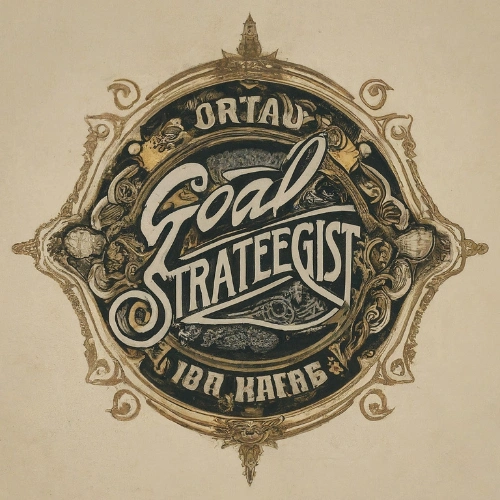Ever wondered how medieval popes wielded their clout to bend kings and emperors to their will? One potent tool in their arsenal was the interdict. This ecclesiastical thunderbolt could bring entire kingdoms to their knees, pressuring rulers to capitulate to papal demands.
Imagine living in a time when the church held the keys to your spiritual life, and the pope could lock away sacraments with a word. That’s the power of interdicts. They weren’t just religious decrees; they were strategic moves on the chessboard of European politics, shaping history with divine authority.
What is an Interdict?
When you venture into the realm of medieval power plays, you’ll encounter the term “interdict.” Understanding this concept is key to grasping how popes consolidated their influence during these times. An interdict was a church sanction that placed a person or a region under a series of prohibitions and spiritual penalties.
Enacted by the highest ecclesiastical authority, namely the pope, interdicts could halt the performance of almost all religious services in the affected area. However, the essentials, such as baptism, confession, and last rites, were typically spared. Popes would leverage these dramatic bans to wield power effectively, knowing that the spiritual life of a realm was the cornerstone of its daily existence.
- Suspended religious activities: Mass and marriage ceremonies stopped.
- Grave impact on society: Burials without church rites spread fear.
- Strategic enforcement: Aimed at the disobedient without affecting loyal followers.
At their core, interdicts were both a show of strength and a negotiation tactic. Through them, popes could indirectly exert pressure on rulers who defied the church. They were especially potent tools because they affected not just the monarchy, but the subjects as well, ultimately stirring unrest and compelling compliance.
By threatening or enforcing an interdict, the pope took a definitive stance, making it clear that secular powers were subordinate to spiritual authority. This dynamic set the stage for numerous confrontations and resolutions throughout the medieval era. Interdicts reminded kings and emperors that their rule was not absolute and that there was a higher power to answer to – one that held the keys to the kingdom of Heaven and could control the spiritual welfare of their people.
The Power of Interdicts
The efficacy of interdicts as a potent tool used by popes in the medieval era cannot be understated. With this spiritual weapon, the pope harnessed the fear of spiritual consequences to bend the will of secular leaders. Interdicts were more than mere threats; they leveraged the populace’s deep religious convictions, making rulers vulnerable to public unrest and ultimately, necessitating their compliance.
Imagine living in a time when attending Mass, marrying in the church, and receiving the Holy Eucharist were the rhythms of life. An interdict disrupted these rituals—essentially spiritual lifelines—creating an existential crisis for the faithful. The cascading effects could be swift and severe, as social and economic life intertwined with religious observances. Rulers found their legitimacy questioned, and public order destabilized, compelling them to negotiate with the church to lift the interdict.
Strategies Behind Enforcing Interdicts
To grasp the strategic use of interdicts, it’s essential to explore specific cases where popes used this tool to achieve their objectives. For example:
- When King John of England defied the Church’s choice for the Archbishop of Canterbury, Pope Innocent III placed an interdict on England in 1208. It lasted for six years, during which the country experienced grave spiritual drought. The pressure ultimately forced King John to submit to the pope’s will.
- Another notable instance was when Pope Gregory IX employed an interdict against the Holy Roman Emperor Frederick II, who was embroiled in power struggles with the papacy. The political landscape was fraught with tension, and the interdict served as a clear demonstration of the pope’s willingness to use spiritual sanctions to assert church authority.
By understanding the multifaceted implications of interdicts, you start to appreciate why medieval popes viewed them as a formidable tool in their arsenal. They disrupted daily life, coerced compliance, and served as a stark reminder that the church held supreme power over earthly rulers—a message that resonated deeply throughout the medieval society.
How Interdicts were used in Medieval Times
In the chess game of medieval politics, popes used interdicts as a strategic move to check the powers of secular rulers. It wasn’t just about denying religious services, but about leveraging the deep-seated religious convictions of entire populations. It’s as if the spiritual life of a domain was held hostage, compelling even the most powerful to yield.
When a region fell under an interdict, all church services and sacraments were suspended. Imagine you’re living in a time when such events dictated the rhythms of daily life. Births went unbaptized, marriages were postponed, and the dead lay unburied. In essence, interdicts locked the gates to heaven, causing not only spiritual anguish but also social disorder.
Pope Innocent III’s interdict on England serves as a prime example. King John’s refusal to accept the pope’s appointee for archbishop led to the kingdom’s sacramental life coming to a grinding halt. The breakdown of public order and the mounting pressure from the populace forced King John to submit to the pope’s demands.
Holy Roman Emperor Frederick II faced a similar fate under Pope Gregory IX. The interdict disrupted his reign and eroded his authority, showcasing the might of spiritual weaponry in ecclesiastical-political strife. This wasn’t about a display of pomp; it was the pope flexing the church’s muscle in the most impactful way possible.
Remember, interdicts were not issued indiscriminately—they were precision tools tailored to specific conflicts. A pope would weigh the gravity of the situation, the moral standpoint, and the likely impact on the faithful. Only then would he enact this potent form of censure.
Interdicts also had an economic side-effect. Pilgrimages, tithes, and church-related commerce screeched to a halt, tightening the financial vise on rulers who relied on the Church’s economic activity for their prosperity. They weren’t just spiritual decrees; they had tangible, real-world consequences that often forced a swift resolution.
The Pope’s Authority and Influence
When you consider the scope of medieval Europe, it’s critical to understand the role of the papacy. Popes held unmatched spiritual authority, which they could translate into a formidable political influence. Secular rulers, often entrenched in territorial disputes or issues of succession, could scarcely ignore the Pope’s stance as it had the potential to sway public opinion and thus their reign.
Throughout medieval society, the Pope’s word was often regarded as the voice of God, making his edicts, including interdicts, carry significant weight. The clergy controlled much of the literacy and education of the time, further cementing the Church’s influence over the people. When a Pope declared an interdict, it was not merely a religious sentence but a statement that could destabilize kings and noblemen by turning their subjects against them.
Popes tactically used interdicts to target specific regions where rulers defied the Church. This strategy ensured that the burden of religious isolation would pressurize the ruling class to bend to papal demands. Economic leverage was another aspect of interdicts that often goes unnoticed. By halting Church services, the flow of money once controlled by the Church’s financial activities would stop, sending ripples through the economy that a ruler couldn’t ignore.
Interdicts could also influence the international stance of allies and enemies alike. Rulers, fearing isolation, would often seek to align with the papal will to safeguard their political alliances. This form of diplomatic pressure not only bolstered the Pope’s goals but also asserted the Church as a central figure in international politics.
These actions taken by the Popes throughout the medieval period display a keen understanding of both spiritual and temporal power. Their ability to employ interdicts effectively hinged on the intricate relationship between Church and state at a time when the boundaries between the two were deeply intertwined.
Impact of Interdicts on European Politics
When the Pope imposed an interdict, it often shook the foundations of political order. As a leader, you might find your authority undermined as your citizens could no longer receive the sacraments, a situation that fostered unrest and diminished your power. This was especially true during the High Middle Ages, when the connection between the Church and state was intrinsic to your rule.
How Rulers Reacted to Interdicts
You’d notice that kings and nobles often had limited options in the face of an interdict. Some of their typical reactions included:
- Negotiating with the papacy to lift the interdict
- Retaliating against the clergy in their domains
- Seeking support from other political entities
For rulers who valued legitimacy, the interruption of church services threatened their rule to such an extent that they often conceded to the Pope’s demands. This highlights the strategic effectiveness of interdicts as a tool to bend political wills.
The Ripple Effect Across Borders
The use of interdicts didn’t just affect the target region. It had a rippling effect across borders. As a politician, you’d be compelled to consider the diplomatic repercussions of your stance toward the Church. Aligning with a region under interdict might jeopardize your own political alliances, as fear of similar censure was a powerful deterrent. Consequently, European leaders often recalibrated their international relationships based on the Pope’s favor or disfavor, reflecting the interdict’s far-reaching influence on European diplomacy.
Often, this shift in alliances was so profound that historical trajectories of entire nations were redirected. This was not just through direct intervention in conflicts but also through the strategic denial of spiritual privileges, which indirectly steered political landscapes. Thus, you’d see the Pope’s deft execution of interdicts ensure the Church’s centrality in European politics and its influence over temporal matters.
Conclusion
You’ve seen how interdicts served as a formidable tool in the Pope’s arsenal, skillfully employed to bend the will of rulers and reshape the political landscape of medieval Europe. By leveraging the spiritual clout of the Church, the papacy didn’t just influence the spiritual lives of individuals but also steered the course of nations. As you reflect on the historical significance of interdicts, it’s clear they were more than ecclesiastical decrees; they were catalysts for change that echoed through the corridors of power, ensuring the Church remained a pivotal player in the governance of society.


Leave a Reply